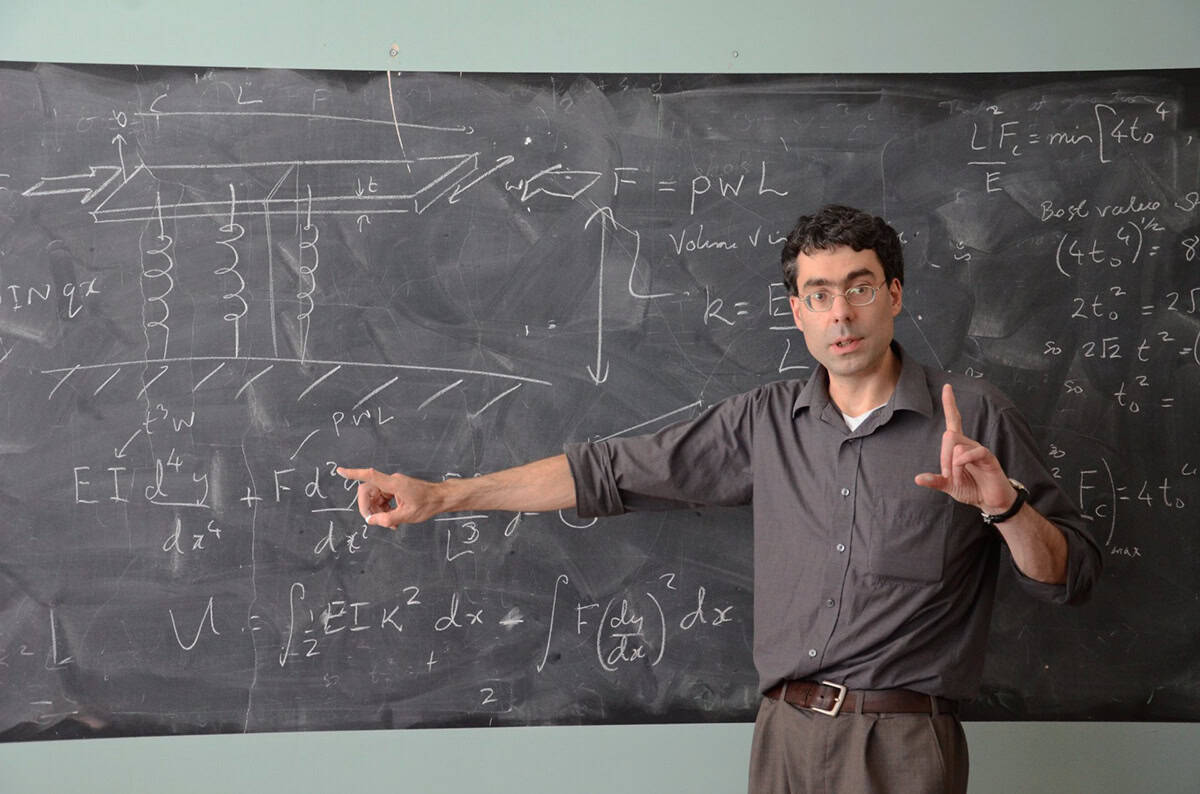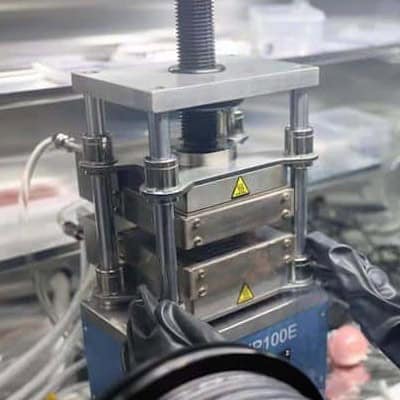A theoretical physicist’s journey through the food and drink industry
Rob Farr is a theorist and computer modeller whose career has taken him down an unconventional path. He studied physics at the University of Cambridge, UK, from 1991 to 1994, staying on to do a PhD in statistical physics. But while many of his contemporaries then went into traditional research fields – such as quantum science, high-energy physics and photonic technologies – Farr got a taste for the food and drink manufacturing industry. It’s a multidisciplinary field in which Farr has worked for more than 25 years.
After leaving academia in 1998, first stop was Unilever’s €13bn foods division. For two decades, latterly as a senior scientist, Farr guided R&D teams working across diverse lines of enquiry – “doing the science, doing the modelling”, as he puts it. Along the way, Farr worked on all manner of consumer products including ice-cream, margarine and non-dairy spreads, as well as “dry” goods such as bouillon cubes. There was also the occasional foray into cosmetics, skin creams and other non-food products.
As a theoretical physicist working in industrial-scale food production, Farr’s focus has always been on the materials science of the end-product and how it gets processed. “Put simply,” says Farr, “that means making production as efficient as possible – regarding both energy and materials use – while developing ‘new customer experiences’ in terms of food taste, texture and appearance.”
Ice-cream physics
One tasty multiphysics problem that preoccupied Farr for a good chunk of his time at Unilever is ice cream. It is a hugely complex material that Farr likens to a high-temperature ceramic, in the sense that the crystalline part of it is stored very near to the melting point of ice. “Equally, the non-ice phase contains fats,” he says, “so there’s all sorts of emulsion physics and surface science to take into consideration.”
Ice cream also has polymers in the mix, so theoretical modelling needs to incorporate the complex physics of polymer–polymer phase separation as well as polymer flow, or “rheology”, which contributes to the product’s texture and material properties. “Air is another significant component of ice cream,” adds Farr, “which means it’s a foam as well as an emulsion.”
As well as trying to understand how all these subcomponents interact, there’s also the thorny issue of storage. After it’s produced, ice cream is typically kept at low temperatures of about –25 °C – first in the factory, then in transit and finally in a supermarket freezer. But once that tub of salted-caramel or mint choc chip reaches a consumer’s home, it’s likely to be popped in the ice compartment of a fridge freezer at a much milder –6 or –7 °C.
Manufacturers therefore need to control how those temperature transitions affect the recrystallization of ice. This unwanted outcome can lead to phenomena like “sintering” (which makes a harder product) and “ripening” (which can lead to big ice crystals that can be detected in the mouth and detract from the creamy texture).
“Basically, the whole panoply of soft-matter physics comes into play across the production, transport and storage of ice cream,” says Farr. “Figuring out what sort of materials systems will lead to better storage stability or a more consistent product texture are non-trivial questions given that the global market for ice cream is worth in excess of €100bn annually.”
A shot of coffee?
After almost 20 years working at Unilever, in 2017 Farr took up a role as coffee science expert at JDE Peet’s, the Dutch multinational coffee and tea company. Switching from the chilly depths of ice cream science to the dark arts of coffee production and brewing might seem like a steep career phase change, but the physics of the former provides a solid bridge to the latter.
The overlap is evident, for example, in how instant coffee gets freeze-dried – a low-temperature dehydration process that manufacturers use to extend the shelf-life of perishable materials and make them easier to transport. In the case of coffee, freeze drying (or lyophilization, as it’s commonly known) also helps to retain flavour and aromas.
If you want to study a parameter space that’s not been explored before, the only way to do that is to simulate the core processes using fundamental physics
After roasting and grinding the raw coffee beans, manufacturers extract a coffee concentrate using high pressure and water. This extract is then frozen, ground up and placed in a vacuum well below 0 °C. A small amount of heat is applied to sublime the ice away and remove the remaining water from the non-ice phase.
The quality of the resulting freeze-dried instant coffee is better than ordinary instant coffee. However, freeze-drying is also a complex and expensive process, which manufacturers seek to fine-tune by implementing statistical methods to optimize, for example, the amount of energy consumed during production.
Such approaches involve interpolating the gaps between existing experimental data sets, which is where a physics mind-set comes in. “If you want to study a parameter space that’s not been explored before,” says Farr, “the only way to do that is to simulate the core processes using fundamental physics.”
Beyond the production line, Farr has also sought to make coffee more stable when it’s stored at home. Sustainability is the big driver here: JDE Peet’s has committed to make all its packaging compostable, recyclable or reusable by 2030. “Shelf-life prediction has been a big part of this R&D initiative,” he explains. “The work entails using materials science and the physics of mass transfer to develop next-generation packaging and container systems.”
Line of sight
After eight years unpacking the secrets of coffee physics at JDE Peet’s, Farr was given the option to relocate to the Netherlands in mid-2025 as part of a wider reorganization of the manufacturer’s corporate R&D function. However, he decided to stay put in Oxford and is now deciding between another role in the food manufacturing sector, or moving into a new area of research, such as nuclear energy, or even education.

Farr believes he gained a lot from his time at JDE Peet’s. As well as studying a wide range of physics problems, he also benefited from the company’s rigorous approach to R&D, whereby projects are regularly assessed for profitability and quickly killed off if they don’t make the cut. Such prioritization avoids wasted effort and investment, but it also demands agility from staff scientists, who have to build long-term research strategies against a project landscape in constant flux.
A senior scientist needs to be someone who colleagues come to informally to discuss their technical challenges
To thrive in that setting, Farr says collaboration and an open mind are essential. “A senior scientist needs to be someone who colleagues come to informally to discuss their technical challenges,” he says. “You can then find the scientific question which underpins seemingly disparate problems and work with colleagues to deliver commercially useful solutions.” For Farr, it’s a self-reinforcing dynamic. “As more people come to you, the more helpful you become – and I love that way of working.”
What Farr calls “line-of-sight” is another unique feature of industrial R&D in food materials. “Maybe you’re only building one span of a really long bridge,” he notes, “but when you can see the process end-to-end, as well as your part in in it, that is a fantastic motivator.” Indeed, Farr believes that for physicists who want a job doing something useful, the physics of food materials makes a great career. “There are,” he concludes, “no end of intriguing and challenging research questions.”
The post A theoretical physicist’s journey through the food and drink industry appeared first on Physics World.





